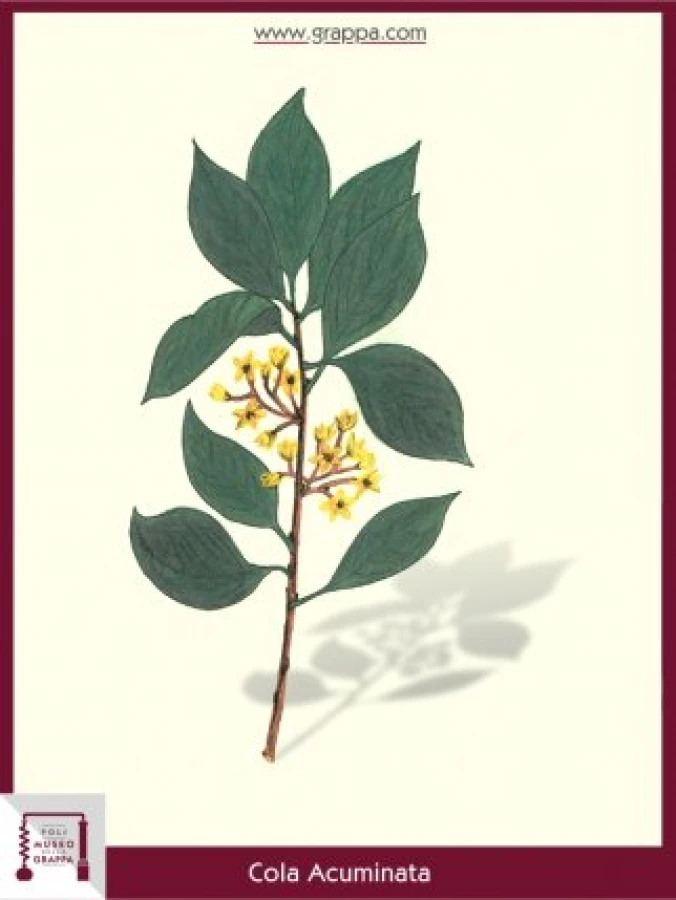Cola Grappa
Kola Nut
Cola Grappa
Plant:
Kola Nut
Plant Part:
seed
Plant Properties:
astringent, digestive, diuretic, expectorant, stimulating, tonic, nerve-strengthening, energetic, analeptic, flavoring, healing, restorative
Description:
Based on the testimony of Leo Africanus we find out that the people of Central Africa have been accustomed to chew a fruit called Goro already since the 16th century, to combat fatigue and hunger.
After about a century it was known as the so-called Kola nut, the seed of the cola, which belongs to a family very close to the coffee. In fact, there are many similarities between the cola nuts and the coffee beans, starting from the aroma to the corresponding caffeine content (almost twice as high as coffee).
Its appetite-suppressing and stimulating effect, from which the people in Afrika had a benefit, is certainly due to its caffeine content.
Let us not forget the indisputable aromatic qualities of the kola nut, which together with its stimulating effect makes up the most important feature of a widespread drink named after the cola.
Why not prepare from it an alcoholic liqueur? Just a Grappa.
Ingredients:
- a dozen of seeds of the kola nut
- 1 liter of Grappa
- some sugar
Preparation:
It takes about ten seeds soaked in the sun, which are placed with the addition of some dissolved sugar in one liter of Grappa.
Frequent stirring can facilitate the extraction, after about one month the preperation is filtered and left to age for other two months.
The Grappa with a stimulating taste can be enjoyed as an aperitif with the addition of some mineral water.


